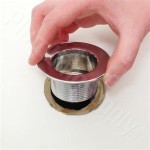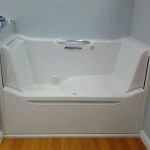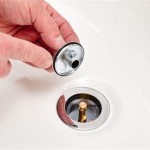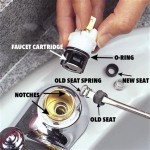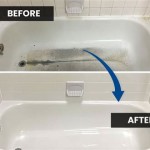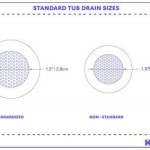Types Of Bathtub Drain Traps
A crucial component of any plumbing system, the bathtub drain trap plays a vital role in maintaining a sanitary and functional bathroom. It serves as a barrier, preventing sewer gases from entering the home while allowing wastewater to flow freely out of the tub. Understanding the different types of bathtub drain traps and their specific characteristics is essential for choosing the right option during installation, repairs, or renovations. A proper understanding of these traps can also help in troubleshooting common plumbing problems related to drainage.
The primary function of a bathtub drain trap is to hold a small amount of water, creating a seal that blocks methane, hydrogen sulfide, and other noxious gases from the sewer line from rising into the bathroom. These gases not only have an unpleasant odor but can also be hazardous to health. Furthermore, the drain trap also catches debris such as hair, soap scum, and small objects, preventing them from clogging the drainpipe further down the line. This contributes to maintaining the efficiency of the plumbing system and reduces the frequency of drain cleaning.
When selecting a drain trap, plumbers and homeowners must consider several factors, including the available space, the type of bathtub, local plumbing codes, and the accessibility for future maintenance. Each type of trap has its own advantages and disadvantages in terms of installation, performance, and longevity. Familiarity with these factors will ensure that the chosen trap provides optimal protection and minimizes potential problems.
P-Traps
The P-trap is arguably the most common type of drain trap used in residential plumbing systems, including bathtubs. Its defining feature is its distinctive "P" shape, which creates a water seal within the curved portion of the pipe. The P-trap consists of three main components: the inlet (connected to the bathtub drain), the U-bend (which holds the water seal), and the outlet (connected to the drainpipe that leads to the sewer system).
The working principle of a P-trap is based on gravity. When water flows down the bathtub drain, it passes through the P-trap and pushes the existing water in the U-bend over the barrier and into the outlet pipe. After the water flow stops, a small amount of water remains in the U-bend, effectively sealing the pipe and preventing sewer gases from escaping into the bathroom. This simple yet effective design has made the P-trap a standard choice for many plumbing applications.
P-traps are generally easy to install and maintain. They are typically connected using threaded fittings or compression fittings, allowing for relatively straightforward assembly and disassembly. This can be advantageous when cleaning out any accumulated debris or making repairs. Blockages can often be cleared by removing the trap and flushing out the obstruction. Furthermore, P-traps are readily available at most hardware stores and plumbing supply outlets, making them a convenient and cost-effective option.
While P-traps offer several benefits, they can be susceptible to certain issues. One potential problem is the risk of water evaporating from the U-bend if the bathtub is not used for an extended period. This can break the water seal and allow sewer gases to enter the room. Another issue is the possibility of debris buildup in the U-bend, which can lead to clogs. Regular cleaning and maintenance are essential to prevent these problems from occurring. It is also important to note that P-traps require sufficient space underneath the bathtub for installation, which may be a limiting factor in some situations.
S-Traps
The S-trap, named for its resemblance to the letter "S," was once a common type of drain trap used in plumbing systems. However, it is now largely outdated and often prohibited by modern plumbing codes due to its inherent design flaws. The S-trap features a similar water seal mechanism to the P-trap, but its configuration makes it more prone to siphoning, which can compromise its ability to block sewer gases.
The S-trap's design consists of a downward curve followed by an upward curve, which forms the water seal, and then another downward curve to connect to the drainpipe. While it initially functions similarly to a P-trap, the longer vertical drop after the trap makes it vulnerable to self-siphoning. When a large volume of water drains quickly, it can create a vacuum effect that pulls the water out of the trap, breaking the seal and allowing sewer gases to enter the bathroom.
The primary drawback of S-traps is their susceptibility to siphoning. This occurs because the vertical drop after the trap is longer than that of a P-trap. As water flows down the drain, it creates a suction force that can draw the water out of the trap, especially if the drainpipe is partially blocked or if the vent is inadequate. When the water seal is broken, sewer gases can freely flow into the room, creating an unpleasant and potentially hazardous environment.
Due to the risk of siphoning, S-traps are generally not recommended for use in new construction or renovation projects. Many plumbing codes now require the use of P-traps or other approved trap designs that are less prone to this issue. If an S-trap is already installed in an existing plumbing system, it may be advisable to replace it with a P-trap to ensure proper drainage and prevent sewer gas intrusion. While replacing an S-trap may require some modifications to the plumbing, it is a worthwhile investment in terms of safety and functionality.
Drum Traps
The drum trap is a less common type of drain trap that is typically found in older homes and commercial buildings. It is characterized by its cylindrical shape, which resembles a small drum. The drum trap functions by allowing water to flow into the drum-shaped chamber, where heavier solids settle to the bottom while the cleaner water flows out through an outlet pipe positioned higher up in the chamber.
The design of a drum trap makes it relatively effective at catching debris and preventing it from clogging the drainpipe. The large volume of the drum allows for the accumulation of a significant amount of sediment and other solids before the trap becomes completely blocked. This can be advantageous in situations where there is a high risk of debris entering the drain, such as in laundry rooms or industrial settings.
While drum traps can be useful for catching debris, they also have some disadvantages compared to other types of drain traps. One major drawback is their size and space requirements. Drum traps are typically larger than P-traps or S-traps, which can make them difficult to install in confined spaces. They also require access for cleaning, as the accumulated sediment must be periodically removed to maintain their functionality.
Another potential issue with drum traps is their tendency to accumulate stagnant water and organic material. This can create a breeding ground for bacteria and other microorganisms, which can lead to unpleasant odors. Regular cleaning and disinfection are essential to prevent these problems. In addition, the large volume of water in the drum trap can make it more susceptible to freezing in cold climates. Insulating the trap can help to prevent freezing and maintain its functionality.
Bottle Traps
Bottle traps, also known as European traps, are a modern type of drain trap known for its compact size and aesthetic appeal. They are often used in contemporary bathroom designs where space is limited or where a minimalist look is desired. The bottle trap consists of a cylindrical body with an inlet pipe at the top and an outlet pipe at the side or bottom. A removable bottle-shaped container at the bottom of the trap collects debris and creates the water seal.
The main advantage of bottle traps is their compact size, which makes them ideal for situations where space is at a premium. They can be installed in tight spaces under sinks or bathtubs where a P-trap or S-trap would not fit. Additionally, bottle traps are often considered more aesthetically pleasing than traditional traps, as their sleek design blends well with modern bathroom fixtures.
Maintenance of bottle traps is relatively straightforward. The removable bottle-shaped container at the bottom of the trap can be easily unscrewed and emptied, allowing for quick and convenient cleaning of accumulated debris. This can help to prevent clogs and maintain the trap's functionality. Some bottle traps also have a cleanout plug that can be removed to flush out any remaining sediment.
One potential drawback of bottle traps is their limited capacity for catching debris. The smaller volume of the bottle-shaped container means that they may require more frequent cleaning than larger traps like drum traps. In addition, bottle traps may be more susceptible to siphoning than P-traps, especially if the vent is inadequate. It is important to ensure that the drain system is properly vented to prevent siphoning and maintain the water seal. While they may be more expensive than traditional traps, their space-saving design and ease of maintenance make them a popular choice for modern bathrooms.
In conclusion, understanding the various types of bathtub drain traps is essential for effective plumbing design and maintenance. Each type, from the common P-trap to the space-saving bottle trap, has its unique advantages and disadvantages. Whether installing a new bathtub or addressing drainage issues, carefully considering the available options and their specific characteristics is key to ensuring a functional and sanitary bathroom environment.
:max_bytes(150000):strip_icc()/bathtub-drain-stopper-types-2718995_FINAL-0e6bd206cdf84844a04c5edfbff5a957.jpg?strip=all)
The 7 Common Types Of Bathtub Drain Stoppers

Types Of Drain Traps Hofen

Drum Traps Structure Tech Home Inspections

Drum Traps Old School Plumbing Fine Homebuilding

Drum Traps Structure Tech Home Inspections

Bathtub Drain Trap And Fittings For A Luxurious Experience

Drum Traps Structure Tech Home Inspections

Understanding Bath Traps

Drum Traps Structure Tech Home Inspections

Older Bathroom With A Drum Trap Here S How To Clear It


